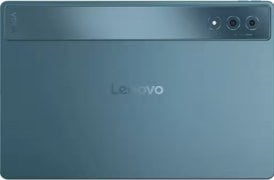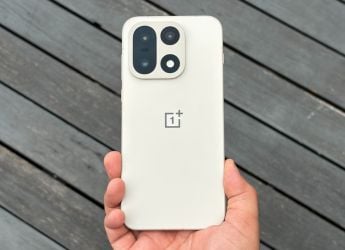- Home
- Auto
- Auto Features
- Old Sierra Emotion, New Sierra Technology: Tata Motors' Vivek Srivatsa Explains the Design Philosophy
Old Sierra Emotion, New Sierra Technology: Tata Motors' Vivek Srivatsa Explains the Design Philosophy
Tata Motors' Vivek Srivatsa says the new Sierra's design aesthetics were chosen based on consumer demands.

Tata Motors launched the Sierra at an introductory price of Rs 11.49 lakh (ex-showroom)
The launch of the new Tata Sierra marks an important moment for Tata Motors. Originally launched in 1991 and discontinued almost 25 years ago, the Sierra is making a comeback in a fresh new avatar. The Sierra has been introduced in three powertrains – two petrol and one diesel engine. The company launched the Sierra at an introductory price of Rs. 11.49 lakh, positioning it against midsize SUVs, such as the Hyundai Creta, Maruti Suzuki Grand Vitara, Kia Seltos, and Honda Elevate. Gadgets 360 had an opportunity to sit down with Vivek Srivatsa, the Chief Commercial Officer at Tata Motors Electric Mobility, to gain insights into this development and company's future plans. Vivek said the company has brought back the old Sierra's spirit, but with modern technology that people have always been emotionally connected to. Some responses have been edited and condensed for clarity.
Q. The SUV market is crowded, and you've called the Sierra a premium mid-SUV. What makes it one?
We created Sierra independently, so we're not worried about other categories. The first point is consumer sentiment. We've seen that consumers continuously want to upgrade, and our lifestyles have been evolving faster than ever. Compared to the early 2000s, the pace of change today is very different. Consumers also spend much more time in their cars — either due to traffic jams or because they take driving vacations.
The feel inside the car has become much more important; while external design has always mattered, the interior now plays a bigger role. A car has become a second home, or as we call it, a “life space.” That's the feeling consumers are sharing with us. They want interiors that make the car feel like home, like a moving home. And that has been the focus of Sierra.
You asked me what makes it premium, first is space. On the inside, you will see both actual space as well as the perception of space being very, very high. First of all, the flat rear floor: it has more shoulder room, legroom and headroom compared to even some 4.8-metre SUVs, larger even than some 4.7-metre high SUVs. So actual space is much higher. Second is tech.
Whether it is onboard safety tech like L2 ADAS or the tech suite for the infotainment system, including Dolby Atmos, it is fully loaded with technology. Third is luxury. We have paid a lot of attention to the premium feel on the interior, whether it is the tactility of the AC vents, the knobs, the driver cockpit — we actually call it the command centre — the quality of the buttons, even the window switches are like a mouse.
We have paid a lot of attention to making consumers feel special inside: the quality of the leatherette, the roof lining, and the overall premium aspect. Finally, the powertrains and performance. We have given the car uncompromised powertrains; whatever your need, we have the right engine for you. We have focused a great deal on refinement and the NVH characteristics of the car. We have something called a frequency-damped suspension, which offers you a magic-carpet kind of ride.
![]()
So every aspect of the car has been premiumised, but we have kept the footprint the same, and still created all that space on the inside without taking the footprint beyond 4.3 metres. This is what customers have been saying: don't make the car too big, I need to drive it in cities, I need to drive it, my wife needs to drive it, don't make it unwieldy, I don't have parking space big enough for a big car, but give me a plus level of comfort, a plus level of technology. So that is where the Sierra is really focused. And that is why we call it a premium midsize. It has a midsize footprint, but everything else is very premium about it. We often say that the OG Sierra was ahead of its time, but India is now ready for this new Sierra because of the kind of premium experience it delivers.
Q. How are you addressing concerns about possible cannibalization between the Harrier and the newly launched Sierra?
I won't really use the word “cannibalization,” because in this segment some amount of cross-consideration will always happen. But the Harrier and Sierra actually appeal to two quite different types of customers. Harrier buyers usually like a bold, muscular look and a strong road presence. Sierra buyers are more family-focused. They prefer a classic, comfortable, legacy-type design. So even though there might be a little overlap, the mindset of both customers is quite different. The premium SUV segment is big enough, and Sierra will actually add new customers instead of taking away Harrier buyers.”
Q. What kind of customer profile does the Sierra cater to? Can you confirm whether the new Sierra will aim for a 5-star safety rating from day one?
Sierra is mainly for people who are upgrading - someone coming from a hatchback or a compact SUV. These are not first-time buyers, but customers who want a family-friendly, premium experience without a big, bulky SUV that is difficult to use inside the city. Sierra appeals across ages - young buyers love the design, while older buyers connect with the legacy.
On safety ratings, we can't confirm the result before the official tests, but you can expect nothing less. Five-star performance has become standard hygiene for Tata, and with Sierra the target is to set a new benchmark that goes beyond just the score.
Q. What are the top features of the Sierra from a gadgetisation and technology standpoint? Is the Sierra running a new connected-car OS? How much of the vehicle experience now depends on software, rather than hardware?
Sierra is loaded with tech. It runs on Tata's new Tidal 2.0 software-defined vehicle platform, which comes with 5G and Snapdragon, so the whole system feels very quick and modern. All the major functions --- ADAS L2, infotainment, the cluster, the vehicle settings --- are controlled through software now. One highlight is the third screen for the co-passenger. They can plug in their earphones, take calls, attend Zoom or Teams meetings, or listen to their own music without disturbing anyone. It genuinely creates a personal space inside the car.
![]()
The GDI engine itself is also a big tech upgrade-refined, smooth and paired with a new 7-speed transmission. Plus features like the Dark Sabre LED headlamps, mood lighting, connected tech, and memory profiles for different drivers. So yes, a big part of the Sierra experience now comes from software. Hardware is strong, but software is what ties everything together and gives that premium, modern feel.
Q. What's Tata's strategy to ensure Sierra production can meet demand and avoid long waiting periods like we saw with the Punch and Nexon?
We've planned Sierra production very carefully. It's going to be built at the new Sanand-2 plant, which has a modern line, faster processes and better capacity. We've also created flexibility in the line so we can ramp up quickly if bookings shoot up. And yes, waiting periods finally depend on demand, but the idea is clear -- keep quality high, scale up fast, and avoid the long delays we saw earlier with Punch and Nexon. The midsize SUV space is huge on its own, and Sierra enters right at the heart of that segment. So we expect it to add strong, incremental volumes to our overall SUV portfolio. It won't replace anything; it will sit above Nexon and alongside Harrier–Safari, bringing in new customers. Sierra is expected to contribute meaningfully to our total SUV numbers and strengthen Tata's presence in the premium SUV category.
Q. Does the Sierra bring back any emotional or iconic design elements that fans of the 90s Sierra will instantly recognise? And What is the real, everyday mileage consumers can expect?
Yes, absolutely. We've kept a few emotional touches that old Sierra fans will spot instantly - the upright rear, the clean glasshouse, and that classic, boxy stance. Even the overall silhouette carries the same ‘go-anywhere' attitude of the original. It's modern and premium now, but the moment you see it, you get that familiar 90s Sierra vibe. As of now, we don't have an official real-world figure to share; it depends a lot on driving conditions, usage patterns, city vs highway mix. Sierra is engineered for refinement and usable performance rather than chasing fuel-efficiency alone. So in typical Indian city and highway usage, people should expect mileage in the range that midsize petrol/diesel SUVs deliver today -- not the ARAI ideal, but realistic, usable numbers that balance performance, comfort and smoothness.
Q. How does the petrol/diesel Sierra fit into Tata's long-term EV strategy, and will it compete with the Sierra EV or add incremental volumes to the SUV portfolio?
It's long-term. Electrification is growing, but ICE isn't going anywhere soon. Tata is investing on both sides creating EV markets and strengthening ICE where demand remains strong. Sierra will be a pillar in both. The customer first chooses the Sierra nameplate. Then they decide petrol, diesel or EV based on need. It's not competition, it's offering choice under one strong brand. Sierra brings something new to the midsize space - premium interiors, lounge-like comfort, ADAS, strong powertrains, and a design with legacy. If Nexon redefined compact SUVs, Sierra has the potential to do the same in the premium midsize segment. Sierra enters the mid–high SUV space, which itself is almost a 7-lakh-unit market annually. It's a large segment. We see Sierra taking a solid share there enough to add meaningful new volumes to our SUV lineup.
Q. In India, EV penetration is still low. Many companies have launched its own EV models, and prices have also come down. But the penetration isn't growing as fast - what is the reason for that?
EV penetration isn't actually low - India touching five percent in such a massive market is a strong start. And globally, once a market hits five percent, growth accelerates. The two big drivers now are range and charging. Range is improving fast, like our Harrier EV with 500km, and charging is moving from 60 kW to 150 kW, which gives 300km in 15 minutes. More chargers, more guns, and faster speeds are coming, just like the smartphone jump we saw. Give it one to two years --- EV penetration will naturally move towards 10 percent.
Get your daily dose of tech news, reviews, and insights, in under 80 characters on Gadgets 360 Turbo. Connect with fellow tech lovers on our Forum. Follow us on X, Facebook, WhatsApp, Threads and Google News for instant updates. Catch all the action on our YouTube channel.
- Samsung Galaxy Unpacked 2025
- ChatGPT
- Redmi Note 14 Pro+
- iPhone 16
- Apple Vision Pro
- Oneplus 12
- OnePlus Nord CE 3 Lite 5G
- iPhone 13
- Xiaomi 14 Pro
- Oppo Find N3
- Tecno Spark Go (2023)
- Realme V30
- Best Phones Under 25000
- Samsung Galaxy S24 Series
- Cryptocurrency
- iQoo 12
- Samsung Galaxy S24 Ultra
- Giottus
- Samsung Galaxy Z Flip 5
- Apple 'Scary Fast'
- Housefull 5
- GoPro Hero 12 Black Review
- Invincible Season 2
- JioGlass
- HD Ready TV
- Laptop Under 50000
- Smartwatch Under 10000
- Latest Mobile Phones
- Compare Phones
- Poco F8 Ultra
- Poco F8 Pro
- Huawei Mate 80 RS Master Edition
- Huawei Mate 80 Pro Max
- Huawei Mate 80 Pro
- Huawei Mate 80
- Huawei Mate X7
- Honor 500
- Asus ProArt P16
- MacBook Pro 14-inch (M5, 2025)
- Poco Pad M1
- Poco Pad X1
- Honor Watch X5
- Huawei Watch Ultimate 2
- Acerpure Nitro Z Series 100-inch QLED TV
- Samsung 43 Inch LED Ultra HD (4K) Smart TV (UA43UE81AFULXL)
- Asus ROG Ally
- Nintendo Switch Lite
- Haier 1.6 Ton 5 Star Inverter Split AC (HSU19G-MZAID5BN-INV)
- Haier 1.6 Ton 5 Star Inverter Split AC (HSU19G-MZAIM5BN-INV)












